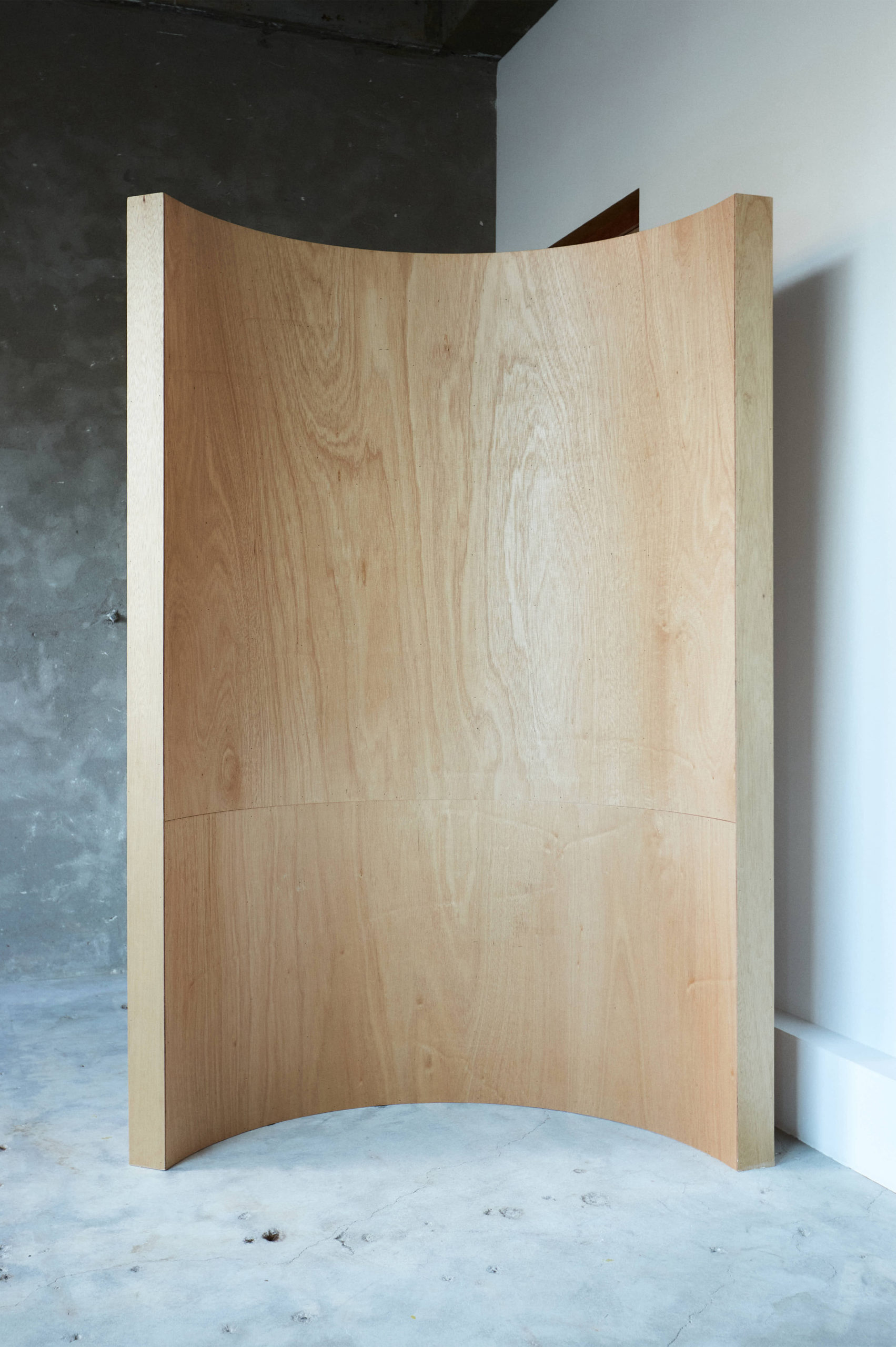











013
Things to hide
Renovating a space means refraining from wanting to create something new. Adding something to a structure that has already been created is additional. In fact, the only thing the user wants may be the maintenance of the old space, new equipment, and a curtain for things to be hidden.
The project started with an old refrigerator by the client. I persuaded the client to buy a new refrigerator, but I was persuaded to say that the client had to save money.
After that, I had to hide the refrigerator. As I imagined the wall to hide the refrigerator, I saw things to hide. The toilet was concealed, and miscellaneous items were hidden.
I thought this space was enough. The identity of the space was created only by the composition of the walls for concealment. In the future, I thought that the client could fill it up while staying.
(Now, 'the round wall for refrigerator' has been transformed into a resting area for clients.)
photograph park sehee
공간을 다시 만든다는 것은 무엇을 새로 만들고자 하는 욕망을 참는 것이기도 합니다.
이것은 보존이나 존중에 관한 문제는 아닙니다.
내가 무슨 태도를 가지든, 어떤 결정이 더 좋은 결과를 낳는가에 관한 문제입니다. 보존 해서 안 좋아질 바에는 철거하는 것이 낫고, 철거해서 망쳐버릴 바에는 보존하는 것이 낫습니다.
어떨 때는 오래된 것들의 정비, 새로운 집기, 그리고 보이기 싫은 것들을 감추는 것이면 충분할지도 모릅니다.
시작은 (아름답지 않은)중고 냉장고였습니다.
나는 냉장고를 숨겨야만 했고, 냉장고를 숨기는 벽을 상상하고 난 뒤에, 숨겨야할 것들을 찾기 시작했습니다. 게임의 룰이 생성된 것입니다. 화장실이 눈에 들어왔고, 화장실은 또 다른 벽으로 가려졌습니다. 그 다음은 주방. 숨길 것들을 정하자 공간이 완성되었습니다.
이 곳의 정체성은 은폐를 위한 벽의 구성에서 오기 때문입니다.
최소한의 것을 하고, 그 다음 오는 것들은 클라이언트가 본인의 취향으로 채워나가는 상상을 했습니다.
(공사가 끝난 후에 냉장고를 위한 벽은 클라이언트가 숨을 수 있는 휴식공간으로 바뀌었습니다.)
Things to hide
Renovating a space means refraining from wanting to create something new. Adding something to a structure that has already been created is additional. In fact, the only thing the user wants may be the maintenance of the old space, new equipment, and a curtain for things to be hidden.
The project started with an old refrigerator by the client. I persuaded the client to buy a new refrigerator, but I was persuaded to say that the client had to save money.
After that, I had to hide the refrigerator. As I imagined the wall to hide the refrigerator, I saw things to hide. The toilet was concealed, and miscellaneous items were hidden.
I thought this space was enough. The identity of the space was created only by the composition of the walls for concealment. In the future, I thought that the client could fill it up while staying.
(Now, 'the round wall for refrigerator' has been transformed into a resting area for clients.)
photograph park sehee
공간을 다시 만든다는 것은 무엇을 새로 만들고자 하는 욕망을 참는 것이기도 합니다.
이것은 보존이나 존중에 관한 문제는 아닙니다.
내가 무슨 태도를 가지든, 어떤 결정이 더 좋은 결과를 낳는가에 관한 문제입니다. 보존 해서 안 좋아질 바에는 철거하는 것이 낫고, 철거해서 망쳐버릴 바에는 보존하는 것이 낫습니다.
어떨 때는 오래된 것들의 정비, 새로운 집기, 그리고 보이기 싫은 것들을 감추는 것이면 충분할지도 모릅니다.
시작은 (아름답지 않은)중고 냉장고였습니다.
나는 냉장고를 숨겨야만 했고, 냉장고를 숨기는 벽을 상상하고 난 뒤에, 숨겨야할 것들을 찾기 시작했습니다. 게임의 룰이 생성된 것입니다. 화장실이 눈에 들어왔고, 화장실은 또 다른 벽으로 가려졌습니다. 그 다음은 주방. 숨길 것들을 정하자 공간이 완성되었습니다.
이 곳의 정체성은 은폐를 위한 벽의 구성에서 오기 때문입니다.
최소한의 것을 하고, 그 다음 오는 것들은 클라이언트가 본인의 취향으로 채워나가는 상상을 했습니다.
(공사가 끝난 후에 냉장고를 위한 벽은 클라이언트가 숨을 수 있는 휴식공간으로 바뀌었습니다.)